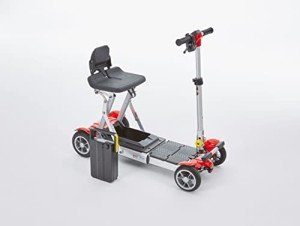Understanding Mobility Devices: Enhancing Independence and Quality of Life
In today's hectic world, the desire for mobility is universal. However, certain medical conditions or age-related challenges can impede motion, resulting in a continuous search for support. just click the up coming web site act as vital tools to boost independence, improve quality of life, and allow individuals to engage completely in their neighborhoods. This short article provides an extensive introduction of mobility devices, including their types, features, selection criteria, and more.
Kinds Of Mobility Devices
Mobility devices vary from simple aids to complex equipment, tailored to satisfy numerous needs. Below is a table summing up typical types of mobility devices:
| Type of Device | Description | Perfect For |
|---|---|---|
| Walkers | Four-legged assistance devices that offer remarkable stability while strolling. | Individuals requiring additional assistance. |
| Walking canes | Single or three-legged sticks that improve balance and support walking. | Those with small mobility problems. |
| Wheelchairs | Seats installed on wheels, readily available in handbook and electric versions. | People with minimal or no mobility. |
| Scooters | Electric automobiles developed for outdoor use and ease of navigation. | Those who can't stroll cross countries. |
| Crutches | Devices that assist people transfer weight far from an injured leg. | People recovering from leg injuries. |
| Rollators | Walkers with wheels, seats, and brakes for enhanced mobility. | Users needing rest alternatives while walking. |
| Raise Chairs | Reclining chairs that help users in standing up and sitting down. | Seniors or those with mobility constraints. |
| Mobility Scooters | Small electric automobiles for minimal mobility, often used outdoors. | Individuals needing help over fars away. |
Key Features of Mobility Devices
When selecting a mobility gadget, numerous key features should be thought about to ensure ideal performance and ease of usage:
- Weight Capacity: Understanding the gadget's weight restriction is crucial for safety and efficiency.
- Adjustability: Devices should be adjustable in height and width to fit the user comfortably.
- Mobility: Lightweight and foldable choices are essential for users who travel or require transport.
- Stability and Safety: Look for features like anti-tip wheels and sturdy structures to improve security.
- Alleviate of Use: Simple mechanisms and easy to use styles can make a considerable difference in day-to-day use.
- Convenience: Ergonomic styles and cushioned seats can enhance the user experience.
Selecting the Right Mobility Device
Selecting the best mobility device can be a challenging task. Here are some actions to direct the decision-making procedure:
- Assess Needs: Evaluate the person's mobility difficulties and everyday activities.
- Consult a Professional: Engage healthcare experts who can offer recommendations based upon the individual's physical condition.
- Trial Options: If possible, trial various devices to determine convenience and performance.
- Review Budget: Consider the expense of the device, consisting of any additional functions or modifications needed.
- Research study Options: Determine the best brand names and models by checking out reviews and contrasts.
Table: Comparative Analysis of Popular Mobility Devices
| Gadget | Advantages | Downsides |
|---|---|---|
| Walkers | Excellent stability, promotes strolling. | Bulky, may restrict movement in small spaces. |
| Walking sticks | Lightweight, improves balance. | May not offer sufficient support for severe mobility problems. |
| Wheelchairs | Suitable for those with substantial mobility limitations. | Can be cumbersome, particularly in indoor environments. |
| Scooters | Great for outdoor usage, easy to maneuver. | Limited indoor usability, much heavier. |
| Rollators | Provides rest choice, easy to move. | May need more space than standard walkers. |
| Raise Chairs | Comfy, assists shift from sitting to standing. | More pricey, larger footprint. |
Regularly Asked Questions (FAQs)
1. What is a mobility device?
A mobility device is any tool developed to help people in moving and navigating their environment. This consists of walkers, wheelchairs, scooters, and crutches.
2. How do I know which mobility gadget is best for me?
Consider your particular mobility difficulties, physical capabilities, and lifestyle requirements. Consulting with healthcare specialists can also supply tailored recommendations.
3. Are mobility devices covered by insurance coverage?
Lots of insurance coverage plans, including Medicare, may cover specific mobility devices. It's crucial to consult your insurance provider for particular protection details.
4. Can I lease a mobility device rather of buying one?
Yes, numerous medical supply shops and drug stores use rentals for mobility devices. This choice is advantageous for people with momentary mobility issues.
5. How can I preserve my mobility gadget?
Regular upkeep is crucial. It consists of cleaning the gadget, looking for wear and tear, and ensuring all parts are working correctly.
The Impact of Mobility Devices on Quality of Life
Mobility devices considerably improve the quality of life for individuals with minimal mobility. They promote self-reliance, encourage social interaction, and enhance access to vital services and leisure activities.
- Increased Independence: Users can navigate their communities, participate in occasions, and engage in hobbies without relying on others.
- Social Engagement: Mobility devices help with participation in celebrations, therefore combating sensations of isolation.
- Enhanced Safety: Devices offer stability and reduce the risk of falls, promoting user confidence.
Mobility devices are more than simply tools for movement; they are gateways to self-reliance and quality living. By understanding the different kinds of mobility aids available, their key functions, and factors to consider for choosing the ideal device, individuals can make educated decisions about their mobility requires. Ultimately, the right mobility device can lead to a more active, fulfilling life. Whether it's a walker, wheelchair, or scooter, the right option contributes considerably to enhancing the mobility and independence of users.

